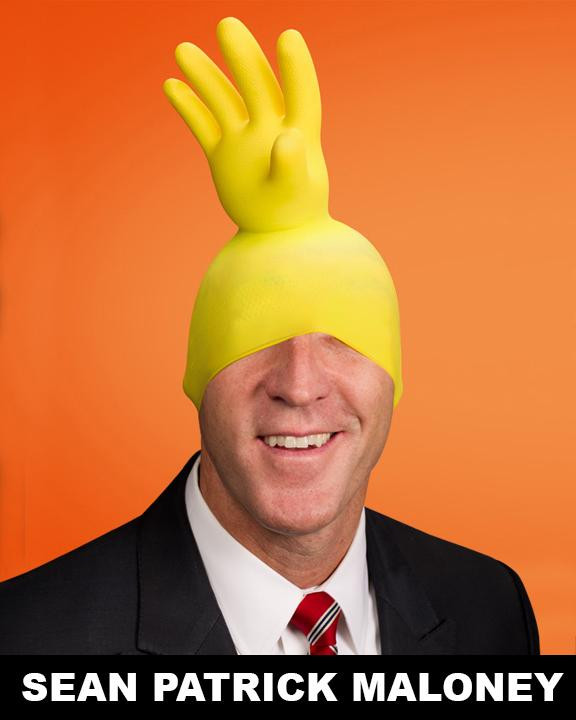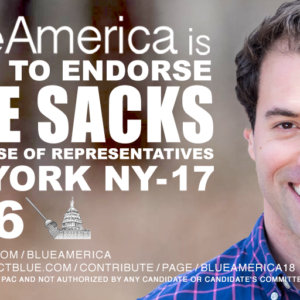
In the decades we have been writing about him– including after an in-person encounter– there has never been a mention of Terry McAuliffe that didn’t include words like “corrupt,” “conservative” and “corporate whore.” In the last race, the most positive thing I could muster was that his opponent was worse. Virginia voters just tried teaching the Democratic Party establishment a lesson: “shovel shit our way and we’ll throw it right back in your face.” And with more. In Virginia, McAuliffe dragged down the two other statewide candidates– though each did better than he did– and lost control of the House of Delegates. Will the Democrats learn? NOT A CHANCE– ZERO! McAuliffe’s campaign has cited the “national headwinds” as the decisive factor in his loss and the establishment– both the political and the media establishments– have latched onto that to explain why a horrible, corrupt, status-quo-supporting candidate failed. In fact, McAuliffe’s miserable loss will just make the party establishment more determined than ever to recruit and push the worst possible Senate candidates– from Conor Lamb in Pennsylvania, Tim Ryan in Ohio, Cheri Beasley and Jeff Jackson in North Carolina to Val Demings in Florida and, worst of all, Abby Finkenauer in Iowa.
This morning, Zach Montellaro wrote about Democratic handwringing in 2022 gubernatorial races. The closest that narrative gets to including anything about what a pile of crap McAuliffe is or how profoundly voters are disappointed in government that serves special interests instead of the national interest was a mention about Biden’s sinking approval ratings.
Montellaro noted that “Even in gubernatorial races– in which candidates generally do a better job at separating themselves from national party dynamics than in federal races– negative views of the president present a huge problem for a slate of Democratic incumbents up next year. That’s especially true after many tied themselves closely to Biden during his 2020 campaign and the first six months of his presidency. Democrats hold the governorship in eight states up in 2022 that are less or similarly favorable than Virginia– Kansas, Maine, Michigan, Minnesota, Nevada, New Mexico, Pennsylvania and Wisconsin– a grouping that has topped Republicans’ target list since the election cycle began. Biden won all those states except for Kansas, and each one of those states has a Democratic incumbent seeking reelection except for Pennsylvania, where the party is lining up behind state Attorney General Josh Shapiro to replace term-limited Gov. Tom Wolf.”
Republicans see Youngkin’s victory as the first of many wins to come, even facing the challenge of having to dislodge a barrage of incumbent Democratic governors across the map.
“We see what happened in Virginia as a pretty solid game plan of how we can work through as we continue to build in the state here,” said Paul Farrow, the state GOP chair in Wisconsin, where Republicans are trying to unseat first-term Democratic Gov. Tony Evers. Farrow ticked through a series of issues he believed were strong for Republicans a year out, which included education and rising inflation.
One of the keys for Democrats will be to develop a response to the newly-emboldened GOP. “You’re going to see Republicans try to run on the Youngkin playbook, and Democrats need an aggressive answer that defines Republicans on education, particularly around taking money out of public schools,” said Jared Leopold, a veteran consultant who was a top staffer at the Democratic Governors Association in previous cycles.
Democrats also need to grapple with a different economic message, strategists say– including addressing the rising costs of everyday goods due to inflation. After his administration largely dismissed inflation concerns as temporary for months, Biden on Wednesday said in a statement that inflation “hurts Americans pocketbooks, and reversing this trend is a top priority for me.”
Democrats are hoping that the president’s dual track legislative agenda– the infrastructure bill, which Biden is scheduled to sign into law next week, and his sweeping social program expansions proposed in the reconciliation package– will buoy the party, and both poll well among Americans.
This might be a good time etiology mention that corrupt conservatives supported with massive amounts of GOP money– from Sinema and Manchin in the Senate to Cuellar (Blue Dog-TX), Gottheimer (Blue Dog-NJ), Schrader (Blue Dog-OR), Case (Blue Dog-HI), Peters (New Dem-CA) and Correa (Blue Dog-CA) in the House– are successfully preventing that popular social program from moving forward. But… maybe they’ll mention it in another story on another day in another universe.
How can a party given control of the White House, the House and– at least on paper– the Senate, fail to lower the cost of drugs and fail to raise the minimum wage and still expect to win the midterms? As usual, the only chance the Democrats have with their mediocre candidates, is that Republicans will offer the voters even worse piles of crap– although that didn’t save them in Virginia.
A couple of days ago, Kyle Kondik asked, in a NY Times OpEd how likely a 2022 Democratic comeback is, noting that the results last week confirmed that “for either party, holding the White House comes with significant power, but in off-year elections, it is often a burden.” He sounds very pessimistic to me. The establishment Democrats hoped they could run around screaming “Trump! Trump! Trump!” to make 2021 an exception. It seemed to have mostly helped Youngkin increase right-wing turnout.
“In other words,” wrote Kondik, “Democrats hoped that the usual rules of political gravity would not apply. But we should not be surprised that the familiar force endured… Unfortunately for Democrats, political gravity is also likely to act against them in 2022– and they face real limits on what they can do about it. There were signs of Democratic decline in all sorts of different places. The suburban-exurban Loudoun County in Northern Virginia is an example. Terry McAuliffe carried it, but his Republican rival in the governor’s race, Glenn Youngkin, campaigned aggressively there on education issues and basically cut the margin compared with 2017 in half. Places like Loudoun are where Democrats made advancements in the Trump years. To have any hope of holding the House next year, the party will have to perform well in such areas.”

Instead, the Democrats will spend millions of dollars trying– likely unsuccessfully– to defend seats held by really crappy Virginia incumbents who deserve to be defeated, particularly subpar conservative DINOs Elaine Luria and Abigail Spanberger, respectively a walking dead New Dem and a walking dead Blue Dog. Both will blame progressives for their impending doom, even though neither, unfortunately, has a progressive primary opponent. They are Republican-lite politicians who will fall victim to full-on Republican/fascist challengers because they failed to embrace the progressive values they neither support nor even understand. The seeds to their inevitable defeats came when the DCCC recruited them because of their innate conservatism.
Turnout in terms of raw votes cast compared with the 2017 gubernatorial race was up all over Virginia, but some of the places where turnout growth was smallest included Democratic urban areas and college towns.
But Republicans had no such trouble: Their turnout was excellent. In New Jersey, the county that saw the biggest growth in total votes compared with 2017 was Ocean, an exurb on the Jersey Shore, which Gov. Phil Murphy’s Republican challenger, Jack Ciattarelli, won by over 35 points.
Democrats have also struggled in rural areas, and the results last week suggest that they have not hit bottom there yet. In the Ninth Congressional District in rural southwestern Virginia, Mr. Youngkin performed even better than Mr. Trump did in 2020.
This combination– even deeper losses in rural areas paired with fallout in more populous areas– would be catastrophic for Democrats, particularly in the competitive Midwest, where Biden in 2020 helped arrest Democratic decline in many white, rural areas but where it is not hard to imagine Democratic performance continuing to slide.
…[A]gainst this political gravity, is there anything Democrats can do? The passage of the bipartisan infrastructure bill as well as the possible passage of the party’s Build Back Better social spending package could help, though there is likely not a significant direct reward— new laws aren’t a magic bullet in campaigning. But a year from now, Democrats could be coming into the election under strong economic conditions and no longer mired in a high-profile intraparty stalemate (the McAuliffe campaign pointed toDemocratic infighting as a drag).
Factors like gas prices and the trajectory of Covid may be largely beyond the Democrats’ influence, but it is entirely possible that the country’s mood will brighten by November 2022– and that could bolster Biden’s approval rating.
When parties have bucked the midterm history, they’ve sometimes had an unusually good development emerge in their favor. If there is any lesson from last week’s results, it is that the circumstances were ordinary, not extraordinary. If they remain so, the Democratic outlook for next year– as it so often is for the presidential party in a midterm election– could be bleak.

And what about changes in what the party is offering in terms of candidates. The victory this week of progressive Sheila Cherfilus-McCormick over the establishment character is a good sign. Many voters will certainly want to NOT vote for corporate whores like Ed Case (Honolulu), Lou Correa (Orange County), Kurt Schrader (central Oregon) and Henry Cuellar (Laredo). But will they instead turn out strongly enough to beat a red wave with change candidates like, respectively, Sergio Alcubilla, Mike Ortega, Jamie McLeod-Skinner and Jessica Cisneros?
Sheila Cherfilus-McCormick was the first of Blue America’s congressional candidates to face the voters this cycle-– and she won. Want to help keep the Democrats from committing ritual suicide this cycle? Ignore the crap candidates the DCCC and DSCC are supporting and get behind independent-minded change candidates for the House and for the Senate.
This crap again? The DCCC’s biggest impending mistake for 2022?









Comments